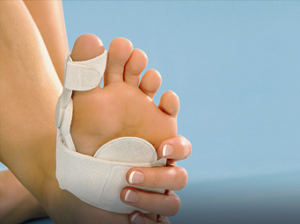“Since the operation my foot has been great. It’s lovely to walk and not feel that I have a stone in my shoe”
Flat Feet
Treatments
 |
Ingrowing Toenails |
 |
Bunions |
 |
Arthritis |
 |
Nerve Pathology |
 |
Verrucae, Corn & Skin Lesions |
 |
Heel Pain |
 |
Flat Feet |
 |
Toe Deformities |
 |
Lumps and Bumps |
Flat Feet
As for the definition , a normal foot has an arch running along the length of the inner side of the foot. A person with a flat foot has little or no arch and as such the heel tilts outwards and the forefoot may rotate outwards when standing or walking. An estimated one in five adults in the UK is flat-footed to some degree, however some people do experience serious problems attributed to flat feet so it is vital to see a specialist as early as possible.
Causes
The primary cause of flat fee is genetic. We are actually born with flat feet and we develop the arch during childhood, but for some this does not take place. It is also possible to develop flat feet later in life.
The shape of the foot is determined by your genes and also by the shape of the bones, the supporting ligaments and the muscles and tendons that move the foot.
In some cases, the condition occurs because of biomechanics with the foot rolling too much when walking. This is often due to excessive laxity in the joints and can be related to weight gain.
You should contact your GP and look for a referral to our clinics if:
- You are in pain. It is important to remember that flat feet can cause pain elsewhere in your body. Your weight being loaded unevenly throughout your body with each step. If you have flat feet and are experiencing pain elsewhere, for instance your knees or back, it is important to consider whether your foot structure is contributing to pain.
- Your foot feels stiff or immobile or weak.
- Your shoes become quickly worn.
Treatment
A physical examination would occur at our clinics, with further recommendation on scans where required.
If you see a specialist at an early stage of problems, it is normally possible to correct the way your walk and therefore resolve pain by simple methods such as use of insoles, orthotics, rest and sometimes physiotherapy. Surgery is sometimes required if the condition is more severe.
consectetur adipiscing elit. Ut elit tellus, luctus nec ullamcorper mattis, pulvinar dapibus leo.
Surgical Treatments
Calcaneal Osteotomy (Heel Shift)
This procedure involves moving the calcaneam, the large bone at the back of the heel which is out of alignment, correctly re- positioning it and then securing the bone using screws.
Tendon transfer
Considered if the tibialis posterior tendon is severely damaged. A tendon is taken from one of the lesser toes, which is then transferred to run behind the medial malleolus. This does not affect the function of the toes and patients make a full recovery.
Fusion
A fusion of joints needs to be considered in order to effectively eliminate pain.


